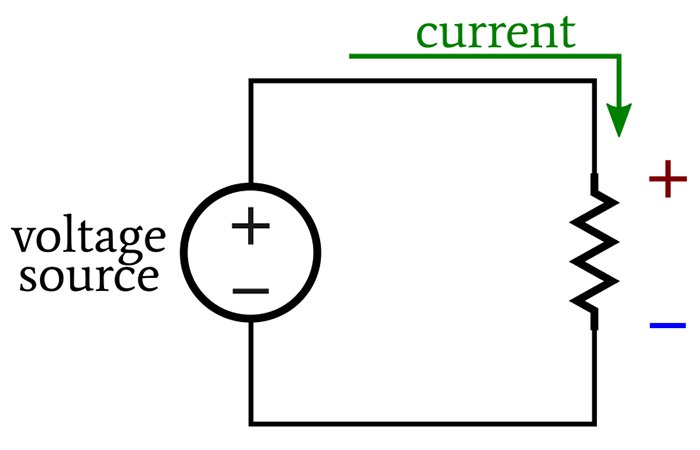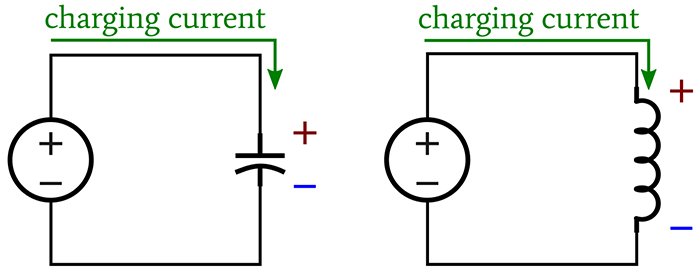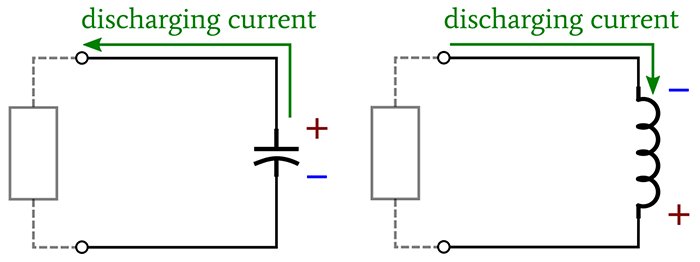







Voltage, Work, and Current Flow
A battery converts chemical energy into electrical energy, producing a voltage—i.e., a difference in electric potential—across its two terminals. A resistor is a component that creates a specified amount of resistance to electric current. When we connect the two terminals of a resistor to the two terminals of a battery, charge carriers move through the circuit, and we call this electric current.
Voltage conveys the ability to do the work of moving charge from one point to another. A 5 V battery, for example, can do 5 joules of work per coulomb of charge. When current is flowing through a resistor, we can measure the amount of work (per unit charge) required to keep the current flowing through the resistor.
This is the essence of voltage drop: a battery (or voltage source) supplies energy for doing the work of moving charge. When current is flowing, components such as resistors consume energy, and the amount of work per unit charge associated with the current flowing through a given component is the component’s voltage drop.
The voltage dropped by a component accounts for a portion of the voltage generated by the battery. In other words, the work performed by the battery is divided up among the components in the circuit.
We can intuitively recognize that driving a given amount of current through more resistance will require more work. Thus, if two resistors are in series (meaning that they have the same current flow), the resistor with more resistance has a larger voltage drop. This is the basis for the operation of the voltage divider circuit.
Polarity of Voltage Drops
A resistor always functions as a load—that is, as a component that consumes energy. If we adopt the conventional current flow model, in which current flows from higher voltage to lower voltage, the voltage drop across a resistor is positive where the current enters the resistor and negative where the current exits the resistor:

A current flow model depicting how a voltage drop is positive where current enters a resistor and negative where it exits.
This polarity “opposes” the source voltage: if we connected a battery with this same polarity orientation, it would drive current in the opposite direction (or it would counteract the source voltage, depending on how you think about it).
Capacitors and inductors store energy, and consequently, they can function as either a load or a source. When they are acting as loads, they have the same voltage-drop polarity as a resistor.

When acting as loads, capacitors and inductors have the same voltage-drop polarity as a resistor.
The voltage-drop polarity of a capacitor doesn’t change when it begins to discharge. Even though it is acting as a source, it produces current whose direction is opposite to that of the charging current.
However, when an inductor discharges, it attempts to maintain current flow. Thus, the polarity of the inductor’s voltage drop changes, because it is generating current whose direction is the same as that of the charging current produced by the source.

